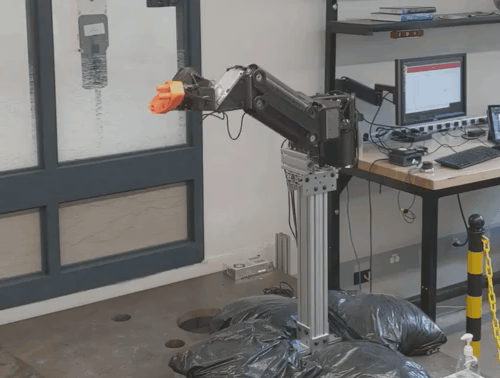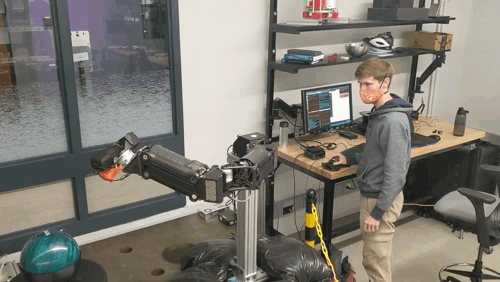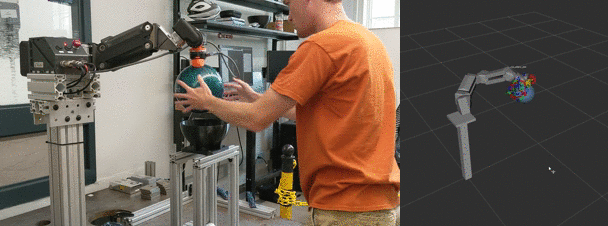



Scorpio is a passively-balanced robotic manipulator developed by Apptronik. Springs embedded in the robot compensate for the weight of successive linkages and a given payload in all configurations. As part of my graduate research, I developed a controller on this system for collaborative assembly tasks.
Prior to my involvement, the robot was capable of scripting to joint states and Cartesian poses:

The Robot Operating System (ROS) was used to control Scorpio. ROS is an open-source project connecting the global robotics community to control a wide variety of robots and interface with all kinds of sensors and peripheral hardware.
I made a ROS package that "jogs" the robot, taking Cartesian velocity inputs and streaming joint state commands to the robot using an inverse Jacobian method. Scorpio has 7 degrees of freedom, one more than is required for a given Cartesian pose. This redundancy was used to stay away from joint limits while jogging. Here I am using a 3D mouse to teleoperate Scorpio:

My research focused on improving precision insertion tasks with heavy payloads. A bowling ball was used as the payload, with a raw spaghetti noodle at the base as the insertion member. These objects were chosen to model a given application while conveying the precise forces involved with the task.
Interaction forces were detected with a Force/Torque (FT) sensor, and the weight of the post-sensor payload as well as a portion of its inertia were subtracted from this measurement to isolate operator forces. Then an admittance control law was used to convert these measurements to jogger inputs.

In the recording below I am performing the experimental task, augmented by Scorpio using my collaborative controller. On the right, the interaction forces are shown in the standard ROS visualization package:

I ran a pilot study with 6 untrained operators, challenging them to blindly insert the fragile pin into a hole at the base of a hemispherical cup. While the sample is small, preliminary results show an increase in operator success and a decrease in time required to complete the task.
My work with Scorpio is more thoroughly covered in my Master's thesis - Manipulator Control in Collaborative Assembly. For now, I am off to work at Los Alamos National Lab, the funding agent for my graduate studies.